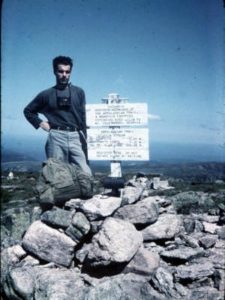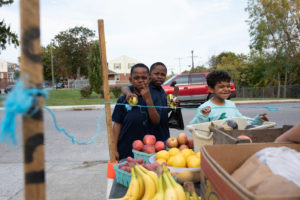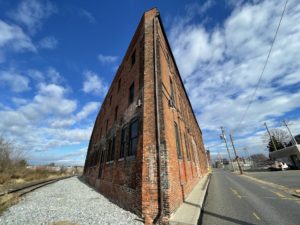Thomas Jefferson slept in Hanover
The situation
Matthew Jackson moderates the Facebook group THE VALLEY: People Power and Caring Communities in the Susquehanna Valley, and his essays are shared often here on WitnessingYork.com. Here, he writes about Thomas Jefferson’s visits to Jackson’s hometown of Hanover:
A pivotal crossroads since before our nation’s founding, as the Revolution brewed, Hanover, in 1774. It was the site of the training grounds of the Hanover Associators of Volunteers, who resolved that, “in the event of Great Britain attempting to force unjust laws upon us by the strength of arms, our cause we leave to Heaven and our rifles.”
During the Second American Revolution, the Civil War, Hanover, just north of the Mason Dixon Line, was the site of the first Civil War battle on free soil.
Always a hub at the crossroads, the town of Hanover was laid out in 1763 around five radiating streets. Of its two major arteries, one stemmed from the port of Baltimore to points north and west. The other connected Philadelphia to the Shenandoah Valley of Virginia, the home of future President Thomas Jefferson (1743-1826).
On April 12, 1776, 33-year-old, Virginia lawyer, statesman and deist Thomas Jefferson stayed overnight at Caspar Reinecker’s Sign of the Horse Tavern in the heart of Hanover. He also got a haircut.
The tavern is at the site of the current parking lot of the Borough offices.
He was on his way to Philadelphia.
There, in the nation’s capital, that summer of 1776, as a member of the Continental Congress, Jefferson penned the Declaration of Independence, one of the most important human rights documents in history, which asserted freedom of the young colony from Great Britain.
Jefferson wrote the famous document under the counsel of Roger Sherman of Connecticut, Benjamin Franklin of Pennsylvania, Robert R. Livingston of New York, and John Adams of Massachusetts.
Long-time Hanover historian John McGrew writes:
“Thomas Jefferson spent the night of April 12, 1776 at the Sign of the Horse on Frederick Street in McAlister’s town, as Hanover was popularly known in its early days. He was on his way from Monticello to Philadelphia to attend the first meeting of the Continental Congress, where on June 10 he would begin the draft the Declaration of Independence. The Battle of Lexington had been fought a year earlier and the Quebec Campaign only months before. Volunteer Militia companies in York County had been enthusiastically mustering for more than a year and would march to join the Flying Camp in just two months. From Jefferson’s memo book, we know he arrived here in time to visit the local barber.”
McGrew adds that Caspar Reinecker’s inn, located just off the southwest corner of the town square, “was Hanover’s leading inn from 1764 to 1792.” The next morning, Jefferson “ate breakfast at White’s Tavern in York and spent the following night in Lancaster.”
On his return to Virginia, Jefferson stayed again at the Sign of the Horse on September 5, 1776.
A sampling of other guest columns by Matt Jackson on WitnessingYork.com: William Henry Johnson, President Lincoln’s aide, Gettysburg Lincoln Railroad Station and Renowned author Rita Mae Brown remembers York County in her writings and visits – Witnessing York.
The witness
In his trek through here, Jefferson was attended by an enslaved 14-year-old whom he owned, Robert “Bob” Hemings (born 1762):
Even though he was 19 years his younger, Robert later became Jefferson’s brother-in-law. Robert also was the brother of Jefferson’s enslaved sexual partner Sally, who mothered six children via Jefferson.
So, in addition to becoming Jefferson’s brother-in-law, Robert also became uncle to six of Jefferson’s children.
Robert had many identities. Here are a few: Son of rape. Chattel property. Western frontiersman. Body guard. Dresser. Horseman. Barber. Cook. Companion. Brother-in-law. Uncle. Freedman. Husband. Father.
His burial place is unknown.
Slavery, such an utterly evil, vile, disgusting, cruel, dehumanizing, devastating and murderous institution, so sick and twisted that only humans could invent it.
Here on the then western frontier in Penn’s Woods, what sights and sounds Robert and Thomas must have experienced.
What topics did they talk about during their long horseback journey from Charlottesville, Virginia, and northbound, on the foothills of the Appalachians, to the Mason-Dixon Line, to Hanover and beyond here in “Freedom Valley”?
Did Jefferson look at himself as a father figure to Robert? Teacher? Manipulator? Abuser? All of the above? Jefferson’s diaries do not tell us, although they meticulously detail his commercial transactions.
Did Jefferson, on his way to Philadelphia, interacting with an enslaved African American on the edge of manhood with his whole life before him, entertain and rattle words and phrases in his brain — “life, liberty and the pursuit of happiness,” “inalienable rights” — later immortalized in the Declaration of Independence?
Was the essential poetry of freedom growing in Jefferson’s mind on route?
April 12 as Declaration Day? Every April 12, here’s hoping that we can creatively honor the Declaration of Independence, a little-known hero of democracy named Robert “Bob” Hemings, and Jefferson. To the best of my knowledge, there is not one storyboard or marker in York County commemorating Jefferson’s epic trek through here to destiny in 1776.
Freedom Valley: Just north of the Mason Dixon Line, Hanover, a child of geographic dysphoria, also straddles York and Adams counties, and long has been at the crossroads of freedom and human rights.
Indeed, the lower Susquehanna Valley was a hotbed border land of the Underground Railroad, and played host, stage, and proving grounds for seminal texts in America’s quest for freedom and more perfect unions.
Jefferson came here to and fro his way to writing the famous Declaration of Independence.
The next year from 1777-78, up the road, York served as the fledgling nation’s provincial, threadbare capital, where the nation’s first working constitution, the Articles of Confederation, and the nation’s first Thanksgiving Proclamation were adopted.
Before the Civil War, in and from New Freedom, Shrewsbury, Hanover, York, Newberrytown, Wrightsville, Peach Bottom and elsewhere, over 1,000 fugitive slaves escaped to freedom here.
In 1863, a few months after the first battle on free soil and prelude to the Battle of Gettysburg erupted in Hanover, President Abraham Lincoln came through and delivered remarks in Hanover via train on the Hanover Branch Railroad to Gettysburg.
There, he delivered what some call our nation’s second Declaration of Independence, the Gettysburg Address.
Hanover, York County and the Lower Susquehanna Valley are a proving grounds, a dramatic stage, and an enduring locus of quests for freedom and human rights.
If you have thoughts on how our area can further serve up its rich history of freedom and more perfect unions for families, tourists, students, weekend warriors, and recreation and rail trail enthusiasts, please let me know your thoughts at jackmattconsulting@outlook.com.
More on the Declaration of Independence
An eloquent articulation of democracy, the first two sentences of the second paragraph of the Declaration are potent with idealism, hope, justice, and human rights:
“We hold these truths to be self-evident, that all men are created equal, that they are endowed, by their Creator, with certain unalienable rights, that among these are life, liberty, and the pursuit of happiness.–That to secure these rights, Governments are instituted among Men, deriving their just powers from the consent of the governed, –That whenever any Form of Government becomes destructive of these ends, it is the Right of the People to alter or to abolish it, and to institute new Government, laying its foundation on such principles and organizing its powers in such form, as to them shall seem most likely to effect their Safety and Happiness.”
More on Robert “Bob” Hemings
From Associated Press: “The eldest of six children, Robert Hemings was born in 1762 into bondage, contradiction and entanglement. His father was the slave owner John Wayles, Thomas Jefferson’s future father-in-law; his mother was a slave, Elizabeth Hemings. Sally Hemings, the enslaved woman with whom Jefferson fathered several children, was Robert Hemings’ sister, and Jefferson’s future wife, Martha Wayles, was his half-sister. Robert Hemings himself would become both Jefferson’s in-law and his property.”
Sources
* Here’s my original article on Jefferson’s journey to and stay in Hanover, for the Smithsonian Institution’s Museums on Main Street:.
* James A. Bear, Jr. and Lucia C. Staton, Editors, Jefferson’s Memorandum Book: Accounts, with Legal Records and Miscellany, 1767-1826, Princeton University Press: New Jersey (1997).
* Hillel Italie, “Remembering the slave who joined Jefferson in Philadelphia” (2020).
* Matthew Jackson, “Give Hanover its historic due: Jefferson stopped there en route to write the Declaration.” (2019).
* John McGrew, Monticello Research Report (1991).
* Scott Mingus, Sr., “The Ground Swallowed Them Up: Slavery and the Underground Railroad in York County, Pa.” (2016).
The questions
Bob Hemings’ relationship with Thomas Jefferson was unusual among those enslaved and the enslavers. Hemings found ways to think and act independently. What lessons can we learn from Hemings? What can we learn from his role in our national story?
Related links and sources: A sampling of U.S. presidential visits to York County. Top photo, Library of Congress.
— By JAMIE NOERPEL and JIM McCLURE




Pingback: Arthur Evans - Prominent activist grew up in York - Witnessing York